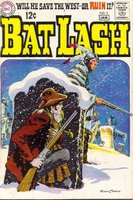
This fits in with an old post of mine on the prevalence of copycat villains during the Silver Age. Cal Rankin was a young man who possessed the rather unusual ability of mimicking the abilities of any person he happened to be around. This was not a mutant ability of his own, rather it came from an accident in his dad's laboratory:

Cal grew up as a jerk, as we can see when he first encounters two of the X-Men out on a date:

And a bit later, he (improbably) also meets up with Jean Grey:

During this second encounter he realizes that she is a member of the X-Men, and follows her back to the school. At first he pretends to want to join the team, but then he fights them and makes off with Jean in a car. They follow after him and he leads them to a sealed-off cave, where his dad had been working on an experimental device to augment the Mimic's power, before his death. But it turns out that dad had actually been working on a way to get rid of his son's powers, and in the end:

He would return in X-Men #27. Jean Grey is off at college when an explosion catches her attention:

The smoke restores his powers and the explosion brings back his memories, but at first he appears really interested in joining up with the X-Men. Professor X has many sterling qualities, but being a judge of character is not one of them:

And indeed when the team encounters the Super-Adaptoid (another doppelganger, this time with the powers of the Avengers), Calvin offers to join the android:

But at the last minute, the Mimic rebels against the Super-Adaptoid and when the latter tries to steal his copycat powers, it causes an "electrical backlash" that shorts out the android (and costs the Mimic his abilities). That was essentially the end for the character in the Silver Age; he did pop up in an issue of the Hulk in 1973 and perished in that tale according to the GCD.


























